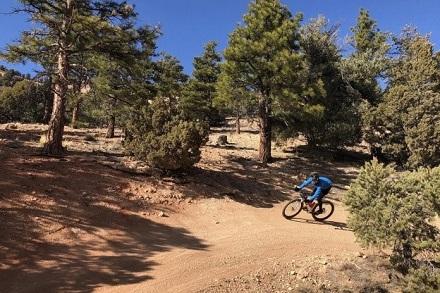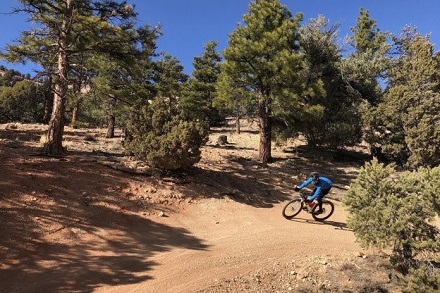

Across the nation, people were blowing the dust off their saddles and tuning up their bikes – in fact, the Los Angeles Times noted some startling facts: From March through mid-June 2020, Eco-Counter — a Montreal-based engineering company that designs and provides bicycle and pedestrian counters, and analyzes data — measured a 21% increase in U.S. urban-area ridership compared with the same timeframe in 2019.
During that same period, the Rails-to-Trails Conservancy saw a 110% increase in ridership on rail-trails over usage from the same time in 2019.
Now, those COVID-19 cyclists, having explored their own neighborhoods, are expanding their horizons and seeking out bigger cities near them to explore as sites for vacations to help replace their truncated summer travel plans. And those cities that can market packages can realize benefits from hotel stays as well as safe dining and outdoor adventures.
One organization at the head of the curve is Valley Forge Convention and Tourism Board. That group, in collaboration with the Montgomery County Planning Commission (MCPC) and Lower Merion Township and its partners, bicycle tours throughout the county. This first tour, “Homes and Gardens of the Main Line,” was created as part of an expansive tourism initiative and was announced in late May. A second, the “Bridgeport Hills Will Test Your Cycling Skills” route, focuses on the tightknit borough community, located in the heart of Montgomery County, accents the area’s industrial past and challenges riders to take on steep hillsides on the southern banks of the Schuylkill River.
And, says Rachel Riley, director of communications for VFTCB, the goal is two-fold. The first sector is to bring in cyclists in the present travel climate.
“It is our hope to provide visitors (locally/regionally for now), with an opportunity to get outside for both mental and physical health, while safely social distancing, and also providing them tours/routes that take them places beyond the bike.”
To assist with the planning of excursions this summer, the VFTCB worked with more than 32 hotels, and 30 partners on a digital savings booklet that provides guests with a new initiative, #MakeItMontoCo, which provides information on accommodations, eateries and other attractions. The booklet is available through the free Visit Valley Forge mobile app.
The second goal of the initiative is more long-range but is rooted in raising awareness of the area’s natural venues in order to bring in competitive cycling events in the future. A third benefit could be a boost in participation in large-scale cycle rides like gran fondos and fund raising rides, which could, in turn, feed into people trying their hand at amateur cycle racing.
“I think it’s always good to promote outdoor activities such as biking at the forefront since there could be a competitive aspect,” said Riley. “We’ve hosted biking events in the past, and hope to continue to do so in the future.”
On the opposite side of the country, Virginia City, Nevada, 22 miles from the Reno-Tahoe International Airport, is another destination baiting the tourism hook with its cycling offerings.
“The entire Reno, Lake Tahoe, Virginia City and Carson Valley territory is seeing a lot of interest in cycling,” says communications official Brooke Summers Hume. “It’s a means to get outside, beat cabin fever, and maintain social distance. This is evident in how busy our regional bike shops are – a silver lining to a challenging time.”
The Virginia City Historic District includes the 19th century mining towns of Virginia City, Gold Hill, Silver City and Dayton, each connected by old stagecoach roads, trails and expansive public lands in a mountainous high desert setting. Rides through this region include cultural sites, historic landmarks and mining artifacts are around each off-road turn.
In fact, according to an e-mail from local DMO Visit Virginia City, “the Virginia City Historic District is an impressive preservation of more than 400 19th century buildings, sites and abandoned mines. Rides in this region are reminiscent of old western films with sights of still-operating steam trains, mines, abandoned camps and wild horses, all while navigating a mix of stagecoach roads, double track and singletrack.”
Visit Virginia City highlights a number of cycle rides, including Jumbo Grande, Toll Road, Six-Mile Canyon, Old Geiger Grade (the province of mountain bikers and gravel riders, as well as others) and Seven-Mile Canyon, as well as others.
While, currently, Virginia City is not hosting competitive events, Hume believes that once the pandemic is over, the potential is there.
“In my opinion, a gravel race would be very fitting for Virginia City,” she notes.
Then there are destinations whose efforts – started several years ago – are paying off in a pandemic. Bentonville, Arkansas, built, in the vernacular of SingleTrack News, “a massive network of high quality mountain bike trails easily accessible from town.”
Since then, it has christened itself “the mountain biking capital of the world.” Pretty strongly worded claim but consider this: Having hosted the IMBA World Summit in 2016 and countless professional riders and visitors from all over the world, Bentonville is already on many mountain bikers’ radars. The region claims its resort-quality trails can be ridden year-round.
And when it comes down to it, Bentonville has the numbers to back up its claim. The area has approximately 130 miles of single-track connected to downtown Bentonville, with access to more than 250 miles of unrivaled regional trails in a network that sits at the heart of the state’s OZ Trails system.
Plenty of other cities are upping their cycle tourism game. Greater Philadelphia is the home of the Circuit Trails, an expansive network of hundreds of miles of multi-use trails that is growing in size each year, and which is used for not only recreational riding but commuting.
Ultimately, DMOs are learning that at the moment, the success of area cycle tourism rests on visitors’ ease of accessing information not only about finding routes but about opportunities for accommodations, dining and sightseeing. Even a weekend visit, which many CVBs and sports commissions are targeting, requires creating a seamless experience for visitors.
Valley Forge has used its mobile app to make information available, and Edward Harris, Chief Marketing Officer for the VFTCB. says that it’s a natural fit in an environment that stresses a contact-free experience.
“Making these new bike routes available on our Visit Valley Forge App gives visitors and residents a one-stop shop to not only navigate these routes, but also have information at their fingertips to discover a wide range of things to do when they get off the bike.”

